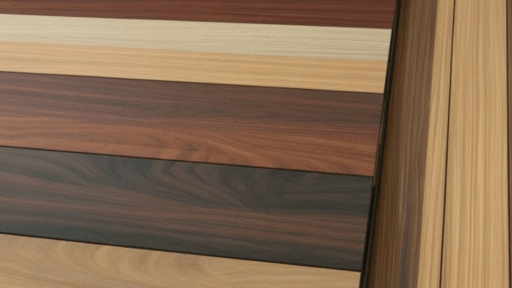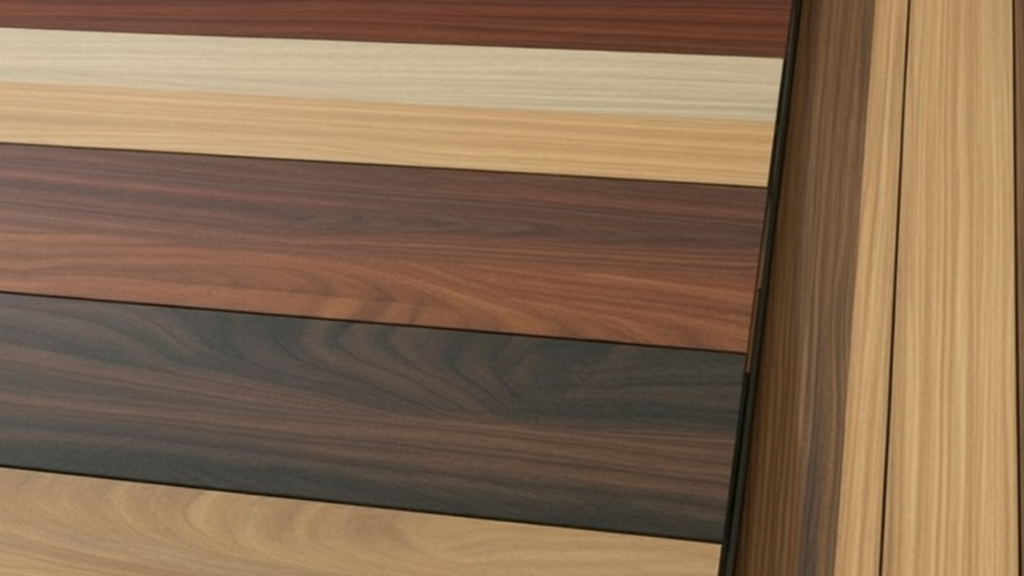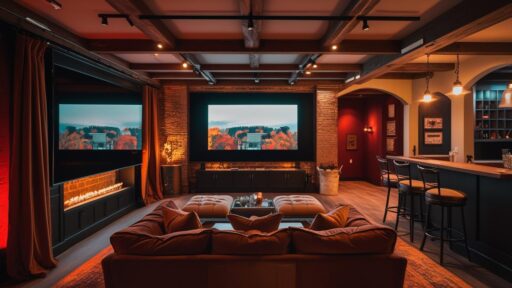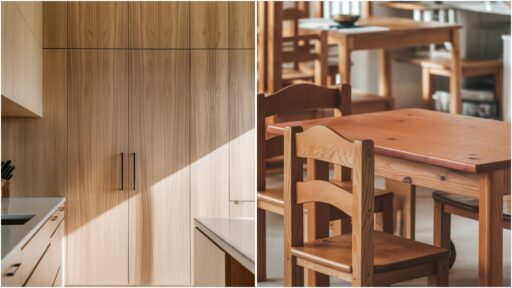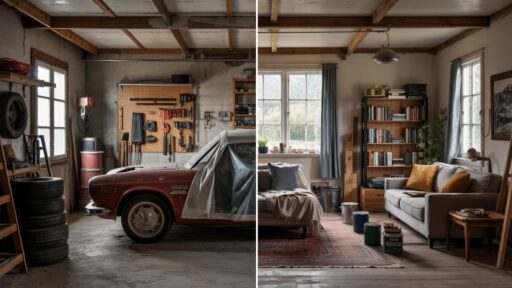Picture this: you’re halfway through building custom shelving when you realize the material you picked isn’t holding up as expected.
The culprit might be confusing HDF (High-Density Fiberboard) with MDF (Medium-Density Fiberboard); two engineered wood products that look remarkably similar but behave quite differently under pressure.
While both materials start their lives as wood fibers mixed with resin, their final forms serve distinct purposes in your workshop.
Knowing which material you’re handling can mean the difference between a project that lasts decades and one that warps within months. Let’s examine how to spot these differences before you make your next cut.
What is HDF (High-Density Fiberboard)?
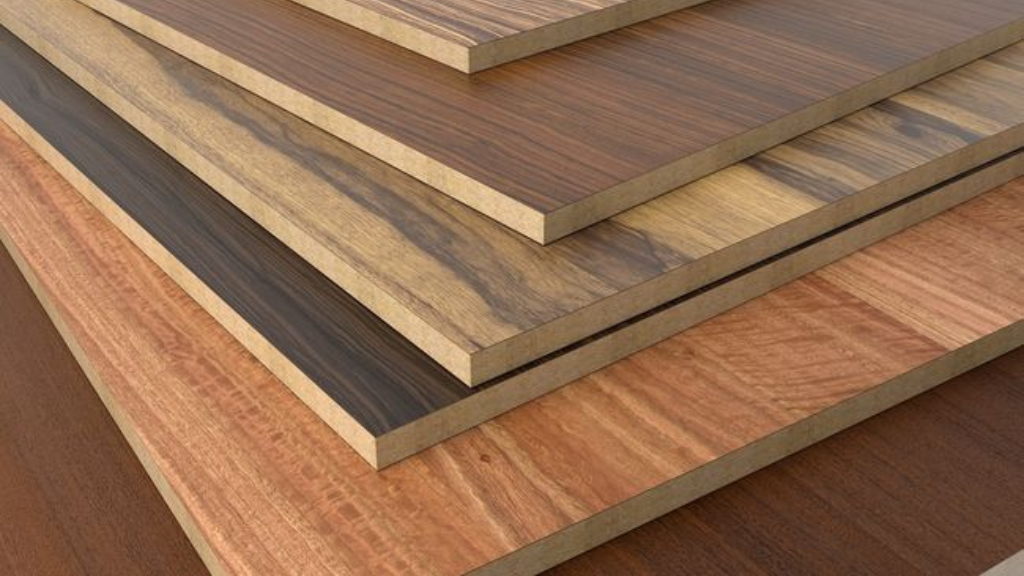
When engineers set out to create the toughest engineered wood possible, they birthed HDF – a material so dense it could practically double as armor plating for your furniture projects.
Definition and Composition: What Makes HDF Unique?
HDF starts life as fine wood fibers – think sawdust’s smaller, more refined cousin – combined with synthetic resin binders under extreme heat and pressure.
The magic happens when manufacturers compress these fibers to densities exceeding 50 pounds per cubic foot, creating a board that’s roughly 10-15% denser than its MDF sibling.
The manufacturing process involves breaking down wood chips into individual fibers, then reassembling them with thermosetting resins.
This fiber-by-fiber reconstruction creates a material with consistent strength properties throughout, eliminating the weak spots and grain variations found in natural lumber.
Common Uses of HDF: Where It’s Typically Found
Walk through any modern home, and you’ll encounter HDF in places where durability matters most. This material earns its keep in high-stress applications where other engineered woods would buckle under pressure.
1. Flooring Applications: Laminate flooring systems depend on HDF as their core substrate, providing the rock-solid foundation that prevents planks from warping, cupping, or developing gaps over time.
2. Cabinet Construction: Professional cabinet makers rely on HDF for door panels, drawer bottoms, and interior shelving, where its dimensional stability prevents the sagging and swelling that can ruin cabinet functionality.
3. Furniture Components: HDF forms the backbone of many furniture pieces, particularly in areas requiring thin yet strong panels. You’ll find it in wardrobe backs, desk surfaces, and bed frame components.
4. Architectural Millwork: Trim work, baseboards, and decorative moldings often utilize HDF because it machines cleanly, holds intricate profiles, and resists the seasonal movement that causes joints to open.
What is MDF (Medium-Density Fiberboard)?
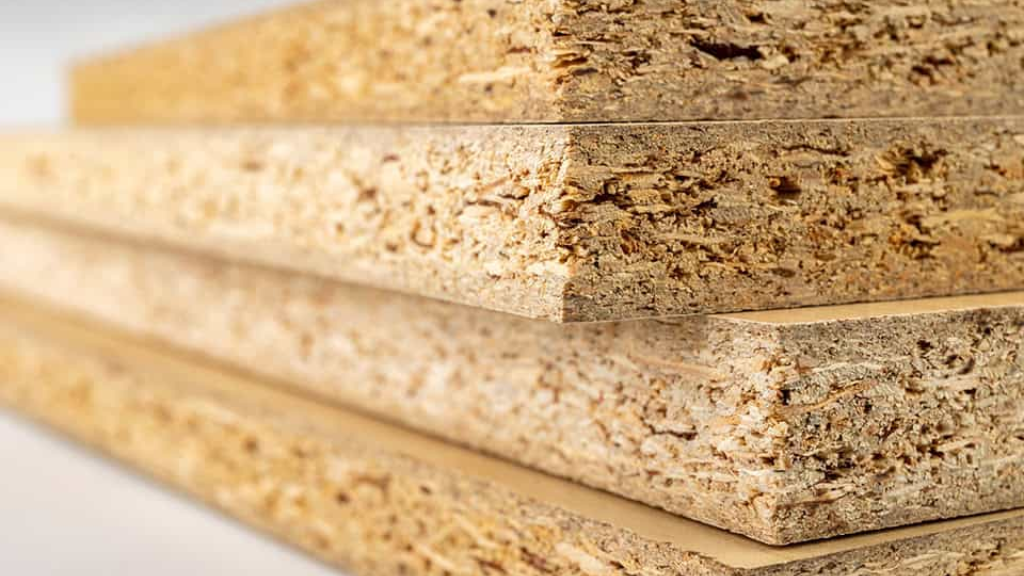
Consider MDF the approachable middle child of the fiberboard family – less intense than HDF but far more cooperative when you need to shape, cut, or finish your project.
This versatile material strikes the perfect balance between workability and performance, making it the go-to choice for countless woodworkers and furniture makers.
Definition and Composition: The Components of MDF and How It Differs from HDF
MDF typically weighs between 31-50 pounds per cubic foot, making it lighter and more porous than its high-density cousin.
The manufacturing process uses slightly larger wood fibers compressed under moderate pressure, creating a material with a more open structure.
This looser composition gives MDF its characteristic smooth surface and excellent machinability, but also makes it more susceptible to moisture damage than HDF.
The resin content in MDF is also different, designed to provide adequate bonding while maintaining the material’s workability. This formulation allows MDF to accept screws, nails, and adhesives readily, though it requires more careful handling around moisture.
Common Uses of MDF: Key Areas Where MDF Shines in Furniture and Cabinetry
MDF has earned its reputation as the sculptor’s clay of engineered wood, excelling in applications where smooth finishes and intricate shaping take priority over raw strength.
1. Furniture Manufacturing: MDF dominates the furniture industry for painted pieces, serving as the foundation for everything from bedroom sets to kitchen islands. Its uniform surface eliminates grain patterns.
2. Cabinet Doors and Faces: When cabinet doors need raised panels, decorative routing, or painted finishes, MDF delivers superior results. Its consistent density allows routers to create clean, chip-free profiles.
3. Shelving Systems: Built-in bookcases, closet organizers, and display units frequently use MDF for its cost-effectiveness and finish quality. The material’s ability to span moderate distances without sagging.
4. Decorative Elements: Crown molding, wainscoting, and architectural details often utilize MDF because it can be shaped into complex profiles while maintaining crisp edges.
How to Visually Differentiate HDF from MDF
HDF and MDF may appear similar, but there are distinct visual and tactile differences. Understanding these features can help you identify them easily for your carpentry or DIY projects.
| Feature | HDF (High-Density Fiberboard) | MDF (Medium-Density Fiberboard) |
|---|---|---|
| Texture and Surface Finish | Smooth, fine-grained, dense surface; feels harder to the touch | Smooth but slightly softer; can feel more porous compared to HDF |
| Weight and Thickness | Heavier and denser; thicker sheets often used for heavier-duty applications | Lighter than HDF; thickness varies, but generally lighter |
| Edge Appearance | Clean, crisp edge; more uniform without noticeable fibers | Softer edge; edges may be more fibrous or have a slightly rougher texture |
| Grain Pattern and Color | Typically has less visible grain, mostly uniform light brown color | More pronounced grain, usually darker, especially when cut or sanded |
Quick ID Tips:
- HDF: Feels harder, looks cleaner, weighs more
- MDF: Feels softer, more textured edges, lighter weight
Common Mistakes in Identifying HDF vs. MDF
Many people incorrectly assume that all engineered wood products have similar weight and density characteristics, leading to confusion when trying to distinguish between HDF and MDF.
Misconceptions about weight, finish, and applications
A common error is believing that MDF and HDF are interchangeable for all projects, when HDF’s higher density makes it better suited for heavy-duty applications like flooring underlayment.
People often mistake a smooth factory finish for an indicator of material type, not realizing that both materials can be manufactured with similar surface treatments despite their different internal structures.
Visual challenges and how to avoid confusion
The most frequent visual mistake is relying solely on color to identify the material, as both HDF and MDF can vary in shade depending on the manufacturer and wood fiber source.
To avoid confusion, always combine visual inspection with tactile testing – feel the weight, examine the edge quality after cutting, and assess the surface density rather than depending on color alone.
When to Use HDF vs. MDF in Projects
Choosing between HDF and MDF depends on the specific requirements of your project, including load-bearing needs, moisture exposure, and desired finish quality.
Understanding each material’s strengths helps ensure optimal performance and longevity in your applications.
HDF Applications and Benefits
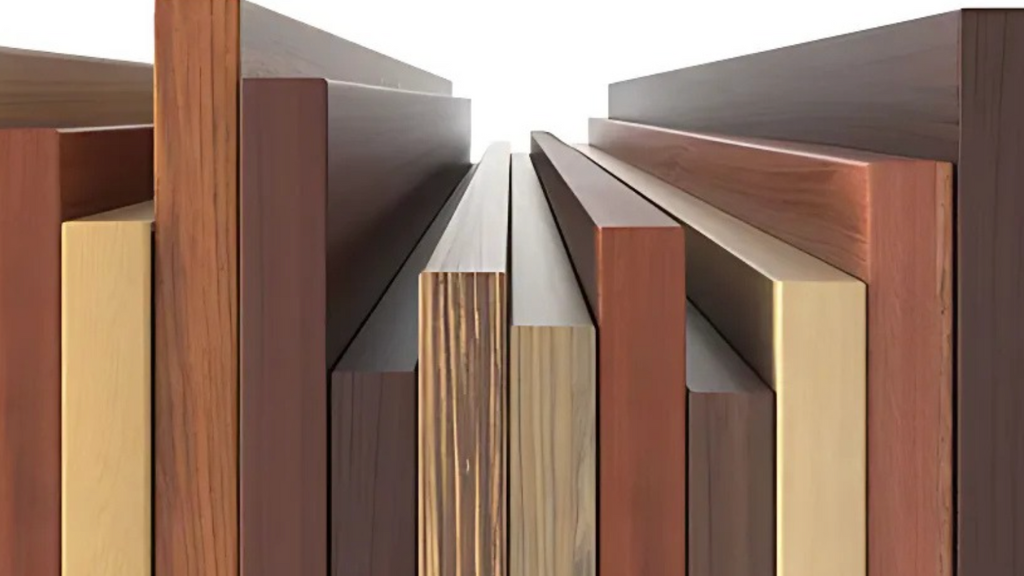
- Use HDF for high-traffic flooring underlayment where superior durability and wear resistance are critical for long-term performance.
- Choose HDF for cabinet backs, drawer bottoms, and structural components that need to withstand heavy loads and frequent use.
- Select HDF for construction applications like subflooring and wall sheathing where structural stability and density are essential.
- HDF performs better in slightly humid conditions, making it suitable for basements and areas with moderate moisture exposure.
MDF Applications and Benefits
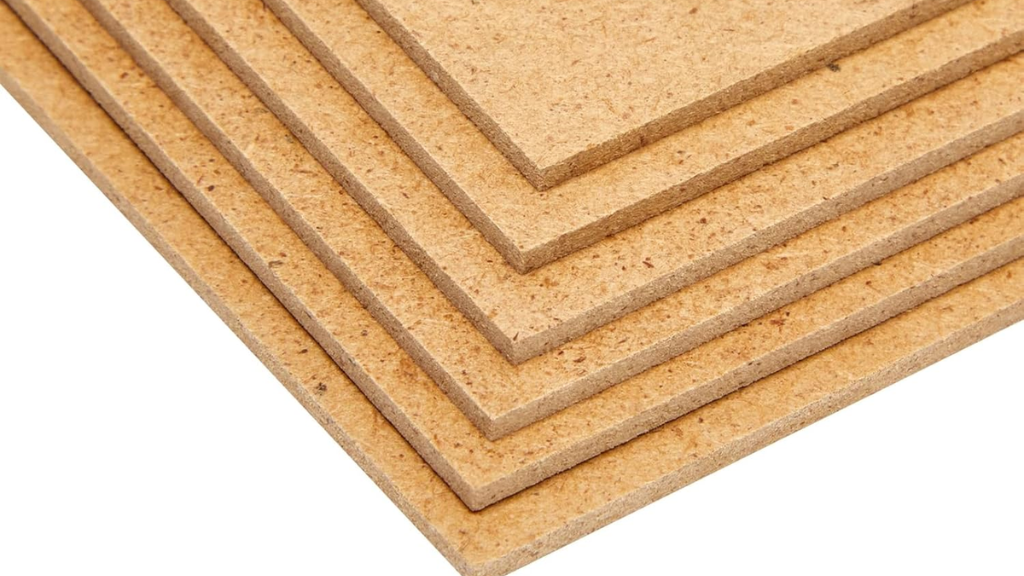
- Use MDF for painted furniture projects where smooth finish and excellent paint adhesion are more important than extreme durability.
- Choose MDF for decorative moldings, trim work, and detailed millwork where clean routing and machining results are needed.
- Select MDF for speaker cabinets and audio equipment where acoustic properties and smooth surfaces matter most.
- MDF offers superior screw-holding power for hinges and hardware, making it ideal for cabinet doors and furniture assembly in controlled indoor environments.
Conclusion
Successfully identifying HDF versus MDF requires combining visual inspection with tactile assessment to make informed material choices.
HDF’s harder, denser surface, clean edges, and uniform light brown appearance contrast sharply with MDF’s softer texture, fibrous edges, and darker grain patterns.
Weight remains the most reliable indicator – HDF feels significantly heavier and denser than MDF sheets of similar dimensions. Consider your project’s environment carefully, as HDF performs better in humid conditions while MDF excels indoors.
Ready to start your next project? Visit your local home improvement store to compare HDF and MDF samples hands-on, feeling the weight and texture differences yourself before making your final material selection.

